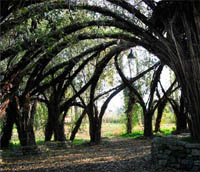
See the rest of this incredible photo article at Dark Roasted Blend

See the rest of this incredible photo article at Dark Roasted Blend

I’m trying to do some research into non-running bamboos, a.k.a. sympodial varieties, to provide some shelter. That seems to be the main purpose for growing bamboo in NZ. I’ll be able to use stems as garden stakes, maybe for some building projects and if I get the right variety, to put in my sushi.
Clumping bamboos generally grow slower then the running-type, a.k.a. monopodial varieties. New shoots only develop close to older stems, mainly in autumn, but twice annually in rich soil. They harden over winter and put on leaf growth in spring and summer.
Non-running bamboos (Clumping or sympodial species) available in New Zealand after the jump Read more

“The insulation is created by pouring a mixture of insulating particles, hydrogen peroxide, starch, and water into a panel mold. Mushroom cells are then injected into the mold, where they digest the starch producing a tightly meshed network of insulating particles and mycelium. The end result is an organic composite board that has a competitive R-Value a measurement of resistance to heat flow and can serve as a firewall.” (Thanks Sustainable Times)
Spores from oyster mushrooms are used in the board which according to David Blume can be grown on distillers grains. Another part of link in the permacultural chain? Corn – alcohol – distillers grains – oyster mushrooms – earthworms – castings – and insulation board? I may have to get one of these NZ oyster mushroom kits for Christmas.
Watch the video Stop Global Warming by Growing Styrofoam with Fungi on YouTube.com.
Read Environmentally Friendly Organic Insulation Uses Mushroom Spores at ScienceDaily.com
Image: Oyster mushrooms by the lovely maggihc @ Dog Hill Kitchen